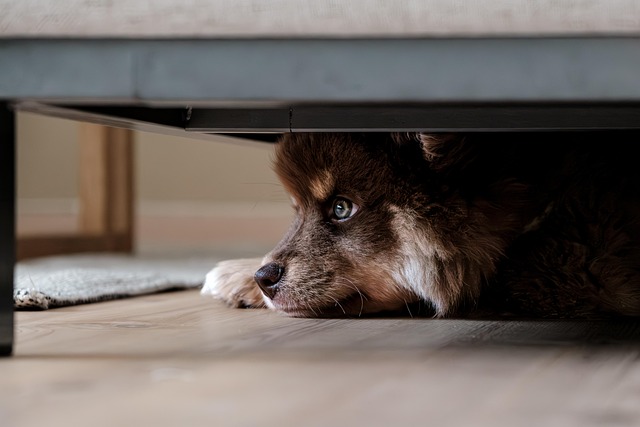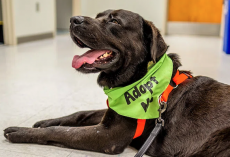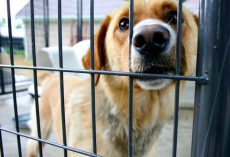Does your dog whimper when you grab your keys? Or leave a disaster zone for you to come home to?
As much as we’d all love to stay home with our pups 24/7, real life doesn’t work that way — and for some dogs, being alone is genuinely stressful. Dogs who panic when their person leaves may be experiencing separation anxiety, and most need a thoughtful treatment plan to start feeling safe again.
Here’s everything you need to know.
Can Dogs Really Have Separation Anxiety?
Absolutely.
In fact, an estimated 20% of dogs struggle with being left alone.
Separation anxiety typically develops when a dog becomes hyper-attached to one person and becomes distressed the moment that person isn’t nearby.
Breed and lifestyle can influence this — hypervigilant breeds like shepherds or hunting dogs tend to be more prone, and dogs who spend long hours alone or are exposed to chaotic, noisy environments may also struggle more. But like people, it varies widely.
What Causes Separation Anxiety?
There’s no single cause, and the “why” isn’t fully understood. What is clear is that the destructive or frantic behavior these dogs show isn’t spite — it’s panic.
Some dogs experience separation anxiety after major life changes, such as:
- Being rehomed
- Losing a sibling (animal or human)
- Moving to a new home
But many dogs go through big changes and never develop anxiety, while others seem to develop it without any clear trigger. Genetics likely play a role, too.
Signs of Separation Anxiety in Dogs
Because separation anxiety is a panic disorder, the signs often resemble a dog having a panic attack. These behaviors usually only happen when the dog is alone.
Common symptoms include:
1. Urinating or defecating indoors
Even if they just went outside, anxious dogs may lose control of their bladder or bowels.
2. Barking, whining or howling
Even normally quiet dogs may become loud, reactive or extra jumpy.
3. Destructive behavior
Chewing door frames, scratching at doors, tearing up objects or trying to escape are common signs.
4. Pacing
Some dogs pace in circles; others move back and forth in straight lines.
5. Excessive panting or drooling
This can signal stress, even if the temperature is normal.
6. Coprophagia
Corprophagia is when your dog eats poop. Some anxious dogs may defecate and then eat their stool — not because they want to, but because panic overrides normal behavior.
How to Help a Dog With Separation Anxiety
Separation anxiety rarely improves on its own. Dogs need help building confidence, learning to tolerate alone time and, in many cases, receiving medical support.
Most treatment plans include training, medication or a combination of both.
A good first step? Talk to your veterinarian.
Training Strategies for Separation Anxiety
1. Desensitize Your Dog to Leaving Cues
Start by making “departure signals” — like picking up your keys or putting on your shoes — meaningless. Do them repeatedly without actually leaving until your dog no longer reacts.
Also avoid big, emotional hellos and goodbyes. Keep departures and arrivals calm, and greet your dog only after she’s settled.
2. Gradually Increase Alone Time
Begin with tiny increments — literally seconds — and work up slowly. Each practice departure should be easy for your dog and never push her into panic.
During this period, make sure your dog is never left alone longer than she can tolerate, using daycare, a friend, family or a pet sitter to bridge the gap.
3. Build Your Dog’s Confidence
Confidence-building activities can make a big difference:
- Positive reinforcement training teaches your dog that good choices pay off.
- Enrichment toys like food puzzles help occupy their minds and reward independence. You can use a food puzzle like this one from Amazon
4. Consider a Professional Trainer
If the process feels overwhelming, you’re not alone. Certified Separation Anxiety Trainers (CSATs) now work remotely and specialize in helping dogs overcome this exact issue — no matter where you live.
5. Try Calming Aids
You can also try using some calming products to help calm down your anxious dog. Some helpful products include:
These won’t solve separation anxiety on their own, but they can help take the edge off during training.
Medication for Separation Anxiety
Medication is often an important part of treatment. Several safe, vet-approved options exist specifically for dogs with separation anxiety.
If you suspect your dog may need medication, talk to your veterinarian — especially because meds tend to work best paired with a training plan.
The Bottom Line
Helping a dog with separation anxiety isn’t always easy, but it is absolutely fixable with patience, structure and the right support team.
With guidance from your vet and possibly a professional trainer, your dog can learn to feel calmer and more confident — and you can leave the house knowing she’s OK.
We independently pick all the products we recommend because we love them and think you will too. If you buy a product from a link on our site, we may earn a commission.











